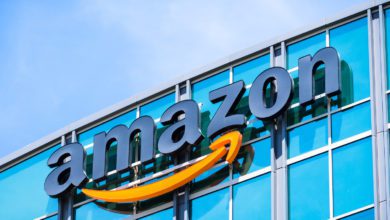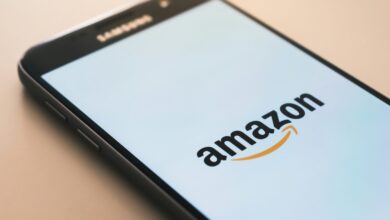Mike Shaw, Director of International Ad Sales at Roku, is at the forefront of a digital revolution in how consumers experience TV and how businesses leverage it for advertising.
Shaw’s career began during the collapse of the dot-com bubble, but rather than being daunted by the economic turbulence, it shaped his approach to retail and data. “I graduated out of university and went straight into a little research company called Fletcher Research…and we really focused on looking at the future of retail,” Shaw explains, referencing how e-commerce was beginning to dominate the retail sector. His experience at Fletcher Research was formative and led him to roles at data-driven companies like comScore, where he dove into understanding how media and audiences could be better measured.
This early immersion in data analytics sparked Shaw’s passion for using data to optimize advertising. “About half of my advertising is working, I just don’t know which half,” Shaw quotes an old advertising adage. It is this mindset that drives Shaw’s belief that “there’s a huge amount more that could be learned around both planning and then subsequent effectiveness of media from the data that was out there.” As connected TV (CTV) becomes a dominant force in media consumption, Shaw now sees an explosion of possibilities for advertisers and retailers alike to leverage data in ways that were unimaginable two decades ago.
The Rise of Roku
Roku, often associated with its streaming sticks, has evolved significantly from its humble beginnings. Shaw describes Roku as “an operating system for televisions.” While the company’s origins lie in offering simple devices to stream content like Netflix and Amazon Prime, today Roku has grown to become a major player in the smart TV ecosystem. In fact, “around half the TVs in the US actually run the Roku operating system.”
Shaw is responsible for Roku’s international markets, particularly in the UK, Mexico, Canada, and Brazil. His work focuses on monetizing Roku’s platform outside of the United States. He shares how Roku’s success in the US was driven by skyrocketing cable charges, which pushed consumers towards streaming devices like Roku. Now, with the majority of households owning smart TVs, Roku has become an essential gateway to the growing universe of streaming content.
Brands don’t need their own technology to do this. They don’t need their own ad agency.
Mike Shaw
The role Roku plays in making TVs more affordable is crucial to Shaw. “The relative cost of TVs and the quality of them…has come down. The quality has gone up, the costs have come down over time,” he points out, citing Roku’s licensing of its operating system to TV manufacturers as a key reason for this trend. This reduction in cost while improving user experience is just one of many ways Roku has had an impact on the broader TV ecosystem.
Retail Media: The Next Frontier
A major theme in Shaw’s interview is the growing importance of retail media. For many retailers, connected TV represents a new, exciting opportunity to reach consumers, but Shaw emphasizes the deeper potential that lies beneath the surface. “Retailers are actually starting to develop new revenue streams by leveraging that data pool that they have,” Shaw says, explaining how retailers’ first-party data is becoming a goldmine for targeted advertising.
With the wealth of consumer data that retailers possess—such as purchase history and location data—retailers can create targeted campaigns in ways that were previously impossible. Shaw provides an example of a Walmart integration on Roku where “the parts of the show are actually shoppable.” Consumers can buy products directly from their TV screen, integrating shopping into their entertainment experience.
However, Shaw is quick to point out that this is still the “very leading edge” of what is possible with retail media. While the integration of shopping into TV shows may sound futuristic, Roku and other companies are laying the groundwork for such innovations to become mainstream. For Shaw, the goal is to make the user experience as seamless as possible, allowing consumers to make purchases with “just a couple of presses of the remote.”
Democratising TV Advertising
One of the most intriguing trends Shaw discusses is the democratisation of TV advertising. Historically, television advertising was dominated by large brands with massive budgets. “Back in the day, probably only around 2,000 brands in total were actually on our TV screens in any given year,” Shaw says. However, the emergence of connected TV is changing that, allowing smaller brands to get their message in front of audiences.
Shaw points to the launch of the Roku Ads Manager as an example of this democratization. “Brands don’t need their own technology to do this. They don’t need their own ad agency,” Shaw explains. This platform enables smaller brands to access TV advertising without the enormous costs and barriers to entry that existed in the past. As TV continues to evolve, Shaw expects to see “thousands and thousands” of new brands on TV in the coming years.
TV has a real opportunity…to take back some of that digital and performance-orientated money.
The Future of Shoppable Ads
Shaw is confident that shoppable ads are going to play an increasingly important role in the future of TV advertising. When asked why he thinks these ads have seen such high engagement rates, Shaw attributes it to the convenience they offer. “The easier you make things for consumers, the more likely they are to do things with it,” he states simply. By removing friction from the buying process and allowing consumers to interact with ads directly from their remote control, shoppable ads provide a smoother customer journey.
However, Shaw is cautious about overstating the impact of shoppable ads. While he believes they will play a significant role in the advertising ecosystem, he doesn’t foresee TV becoming the primary platform for all e-commerce. Instead, he views shoppable ads as one component of a larger, integrated retail strategy.
Looking Forward
As connected TV continues to grow, Shaw is focused on refining the user experience and making advertising more accessible. Machine learning and data analytics will be critical tools in achieving this. “The ability to have software and essentially the machine learning capabilities brought to bear on even better targeting for brands is going to be absolutely pivotal,” Shaw emphasizes.
Roku is poised to lead this charge, and Shaw is excited about the potential to revolutionize how brands connect with consumers. “TV has a real opportunity…to take back some of that digital and performance-orientated money,” he says, underscoring how the lines between traditional media and digital advertising are blurring.
For retailers, the advice is clear: start small, experiment, and learn from the data. Shaw is optimistic that the future of TV advertising holds immense potential for brands of all sizes to harness the power of connected TV and shoppable ads. As consumers increasingly embrace streaming platforms and interactive content, the intersection of television, data, and retail will shape the future of advertising for years to come.







